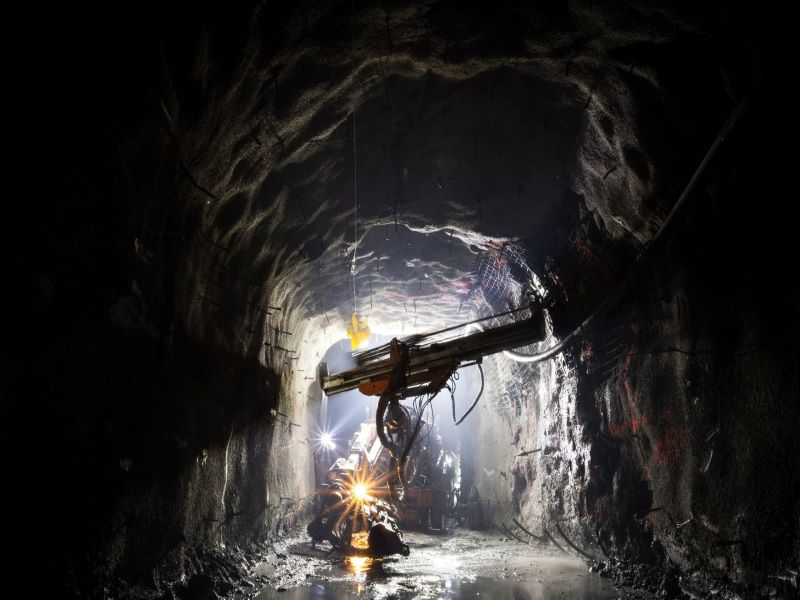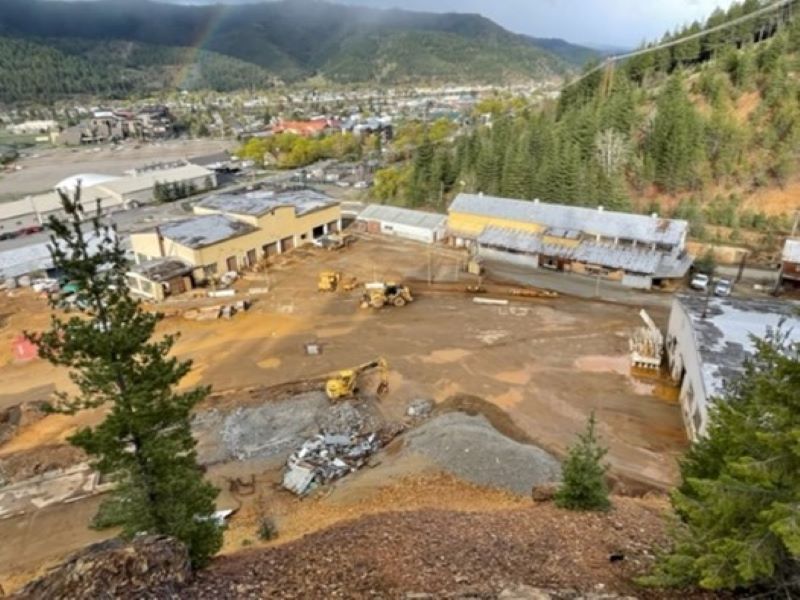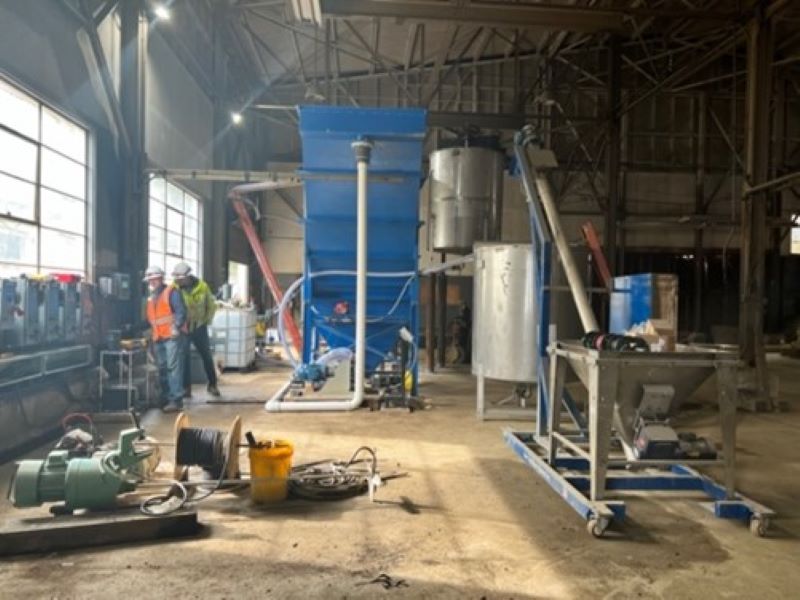Bunker Hill mine is a historical zinc, lead, and silver mine located in the Kellogg and Wardner cities in Shoshone county, Idaho, in the north-western US.
Bunker Hill Mining, a company based in Canada, owns the mine, which has been under care and maintenance for more than 30 years. The company plans to restart operations at the mine.
The pre-feasibility study (PFS) for the restart, with an estimated investment of $54.8m, was announced in September 2022. It covers phase 1 of the restart operations, with an estimated life of mine (LOM) of five years. The phase 2 expansion is expected to provide upside potential from resource conversion, metallurgical optimisation, and mine life extension. The phase 1 restart operations are expected to commence by the end of 2023.
Bunker Hill mine development background
Development of the property commenced in 1885 and mining operations ceased in 1981 due to low base metal prices. The decision to suspend mining was also necessitated by financial reasons as the new environmental regulations at that time required significant capital investment to upgrade the processing and smelting operations.
The mine was reopened in 1988 and operated until it was finally closed in 1991. It has been under care and maintenance since 1991.
The mine produced 42.77 million tonnes (Mt) at an average grade of 8.43% lead, 3.52 ounces (oz) silver per tonne, and 4.52% zinc.
The lead smelter and zinc processing plants were fully dismantled. The water discharge from the mine is being treated by a state-run water treatment facility located near the mine site. Site clean-up activities were also completed to comply with environmental regulations.
Bunker Hill Mining signed an agreement with Placer Mining and two individuals, William Pangburn and Shirley Pangburn, to purchase the mine property, including the mineral titles and surface rights in December 2021. The company assumed ownership of the property in January 2022.
Bunker Hill Mining signed an agreement with Teck Resources (Teck) for the purchase of the Pend Oreille process plant in January 2022 and completed the transaction in June 2022.
The mill was dismantled from Teck’s Pend Oreille site and demobilised to the Bunker Hill site in August 2022.
Project location and geology
The property is situated within the Coeur d’Alene silver district in the Northern Idaho Panhandle region, which is underlain by sedimentary rocks of the middle Proterozoic-aged Belt-Purcell Supergroup.
Mineralisation and reserves
Mineralisation at the Bunker Hill mine occurs as mineralised shoots, hosted in quartzite units that are intersected by vein structures.
The host rocks are almost exclusively from the Upper Revett formation of the Ravalli Group, part of the middle Proterozoic-aged Belt Supergroup.
The probable mineral reserves at Bunker Hill are estimated at 3.2 million short tons, equivalent to 2.9 million tonnes (Mt), grading 5.30% zinc and 2.40% lead, as of September 2022.
Mining at Bunker Hill mine
The Newgard and Quill zones will be mined using the underground mining method of long-hole open stoping (LHOS) with backfill. Stopes are proposed to be accessed through lateral shafts from the Newgard ramp.
The ramps and raise systems will also function as a ventilation system, utilities, and a secondary escapeway while also enabling the movement of mobile equipment.
New excavations will provide primary access to the new LHOS areas and provide connection to some of the existing levels, which are to be rehabilitated. A hydraulic backfill plant and distribution system will provide the backfill for the operations.
Processing details
The proposed processing facility is expected to have a mill throughput of 1,800 short tonnes (1,632t) a day. A ball mill with the capacity to support the throughput was procured in September 2022. It is expected to replace the ball mills procured from the Pend Oreille site. It also has the potential to support an increase in the production throughput to 2,100 short tonnes a day (1,905 metric tonnes) in the future.
The run-of-mine (ROM) ore will be transferred to a mobile jaw crusher at the surface portal in Wardner and trucked to the secondary crushing circuit after the crushing process.
The main processing facility and secondary crusher will be located in the Kellogg yard, which lies adjacent to the Kellogg tunnel. A new concentrator facility will also be constructed at the existing Bunker Hill maintenance building site.
The new concentrator facility will house a primary ball milling circuit that feeds a conventional differential flotation circuit for lead and zinc. The north end of the concentrator site will be used for concentrate dewatering and loadout to support the loading of concentrate trucks. Concentrator tailings will be filtered to produce a tailings filter cake.
The zinc and lead concentrates products from the mine are proposed to be hauled by trucks to Teck’s smelting facility in Trail, British Columbia.
Bunker Hill infrastructure
As a mature mine, Bunker Hill has much of the underground infrastructure and development still in place, with a few facilities requiring refurbishment.
The KT portal, which is located immediately adjacent to the mine offices, is currently used for rail haulage while also connecting to the main hoist rooms and inclined shafts. There are two existing shafts providing access to the lower levels of the mine.
Power supply for the mine operations is provided by Avista Utilities via a substation located near the Kellogg side office complex. The site has enough power for the initial restart of operations, with plans to upgrade the substation to support the power requirements of the full mine by the third year of operation.
Underground water sources will be tapped for the mine and process distribution.
The freshwater needs of the concentrator are expected to be met from mine water sources or a water treatment facility within the concentrator plant.
An on-site pilot water treatment plant became operational in May 2022. It is designed to treat effluent prior to the final treatment by the government-owned water treatment plant. A long-term, on-site pilot water treatment plant is planned at the mine.
Financing
Bunker Hill Mining executed a non-binding term sheet with Sprott Private Resource Streaming and Royalty (SRSR) for a $50m project finance package in December 2021. The package is being used to fund the mine restart.
Offtake option agreement
Teck also holds an exclusive option to acquire all the zinc and lead concentrate produced from the Bunker Hill mine for five years.
Contractors involved
The mine infrastructure, capital expenditure (capex), and operating expenditure (opex) related studies for the PFS were prepared by MineTech USA. The company also provided portions of the mine plan, reserves, and operating schedules, as part of the PFS.
Paterson & Cooke (North America), a mining consultant, was engaged for the tailings and backfill components while engineering and environmental consulting services company Barr Engineering provided milling and process design for the PFS.
YaKum Consulting was responsible for processing and metallurgical testing.
Bunker Hill Mining agreed to purchase a ball mill, motor, and spare parts from D’Angelo International in September 2022. The delivery is expected to be completed in the first quarter (Q1) of 2023.
MineWater assisted Bunker Hill Mining in conducting the final engineering study for an in-mine water treatment system at the mine site.






